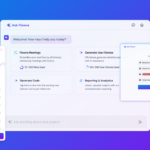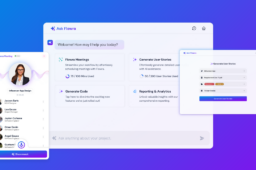
The ROI of Customer Satisfaction: How Happy Customers Drive Business Growth
- October 23, 2024
- by
- tehreem
Many businesses today struggle with customer retention, high acquisition costs, and stagnant growth. They pour resources into attracting new customers but often overlook the most critical factor driving long-term success: customer satisfaction.
Customer dissatisfaction can have a ripple effect across your business—leading to higher churn rates, negative word of mouth, and plummeting profits. Meanwhile, businesses that prioritize customer satisfaction see increased loyalty, greater lifetime value (CLTV), and a strong return on investment (ROI).
In this post, we’ll explore how investing in customer satisfaction can boost your ROI, lower operational costs, and drive consistent business growth. Let’s dive into the numbers, strategies, and real-world examples of how happy customers become a business’s most powerful growth engine.
1. Defining Customer Satisfaction and ROI
Customer Satisfaction is a measure of how well your products, services, and overall customer experience meet or exceed customer expectations. When customers are satisfied, they are more likely to return, recommend your brand to others, and increase their spend over time.
On the other hand, ROI (Return on Investment) is a business metric used to assess the profitability of investments relative to their costs. It’s often expressed as a percentage:
When these two concepts intersect, the true power of customer satisfaction becomes clear: happy customers not only increase their individual lifetime value but also lower your overall acquisition costs by becoming brand advocates.
2. The Financial Impact of Customer Satisfaction
Customer Satisfaction has a profound effect on your bottom line. Let’s break down how it contributes to financial growth:
- Reduced Customer Acquisition Costs: Acquiring new customers can be 5 to 25 times more expensive than retaining existing ones. Satisfied customers often turn into repeat buyers, reducing your need for expensive marketing campaigns to attract new clients. This directly impacts your ROI by lowering acquisition costs.
- Increased Customer Retention and Lifetime Value (CLTV): Happy customers tend to stick around. According to research, even a 5% increase in customer retention can lead to a 25-95% boost in profits. When customers remain loyal, their lifetime value increases, driving more consistent revenue streams.
- Lower Operational Costs: Investing in automation and self-service solutions, such as chatbots and knowledge bases, can streamline your support processes. These tools enhance customer satisfaction by providing quick and efficient solutions, while also lowering operational costs by reducing the need for manual support
Case Study: A company using Zendesk’s AI-powered customer support saw a 369% ROI by reducing customer service response times, improving satisfaction, and cutting operational costs
3. Measuring the ROI of Customer Satisfaction
To fully understand the impact of customer satisfaction on ROI, businesses must track key performance indicators (KPIs) like:
- Net Promoter Score (NPS): Measures customer loyalty by asking how likely they are to recommend your company to others.
- Customer Satisfaction Score (CSAT): A simple metric that gauges customer happiness based on their feedback about a recent experience.
- Customer Effort Score (CES): This measures how much effort a customer had to put in to resolve an issue. Lower effort generally leads to higher satisfaction.
By monitoring these metrics, businesses can track the direct impact that improved customer satisfaction has on retention, sales, and overall profitability.
Investments in customer satisfaction can lead to significant returns, as shown by real-world examples of brands that boosted their customer experience and, as a result, their profits.
4. Customer Satisfaction as a Driver of Revenue Growth
Beyond cost savings, customer satisfaction can directly increase revenue:
- Referrals from Satisfied Customers: When customers are happy, they tell their friends. Word-of-mouth marketing is one of the most powerful—and cost-effective—ways to drive new business. This can significantly reduce your cost per acquisition (CPA) while bringing in more customers.
- Upselling and Cross-Selling Opportunities: Satisfied customers are more likely to trust your recommendations. This trust enables businesses to upsell higher-tier products or cross-sell complementary services, boosting revenue.
- Increased Sales and Repeat Purchases: A happy customer is not only more likely to come back, but they’re also likely to spend more. Studies show that repeat customers can spend up to 67% more than new customers
Zendesk
.
5. Cost Savings through Improved Customer Experience
Improving customer satisfaction doesn’t just drive revenue—it also lowers costs. Here’s how:
- Automation in Customer Service: Implementing AI chatbots and self-service options can resolve common issues without human intervention. This reduces the number of support tickets and lowers operational costs while improving customer experience
. - Personalized Customer Experience: Personalization is key to making customers feel valued. Tools that tailor communications and recommendations to individual preferences enhance customer loyalty, driving both retention and cost savings
6. Best Practices to Improve the ROI of Customer Satisfaction
Improving customer satisfaction is a continuous effort. Some best practices include:
- Omnichannel Support: Meeting customers on their preferred channels—whether through phone, chat, or social media—enhances satisfaction and drives customer loyalty.
- Continuous Feedback Loops: Regularly collecting feedback and acting on it shows customers that their opinions matter, increasing their satisfaction and reducing churn.
By focusing on these strategies, businesses can further improve their ROI and create lasting relationships with customers.
7. Frequently Asked Questions
What Metrics Are Best for Measuring Customer Satisfaction?
- NPS, CSAT, and CES are the most commonly used metrics for evaluating customer satisfaction and its impact on business performance.
How Can Happy Customers Improve Business Growth?
- Happy customers drive growth by providing referrals, making repeat purchases, and being more open to upselling and cross-selling opportunities.
What Is the ROI of Investing in Customer Experience?
- Businesses that invest in customer experience can see an ROI as high as 150% or more, through increased customer retention, reduced costs, and new revenue streams
In today’s competitive landscape, customer satisfaction is more than just a nice-to-have—it’s a powerful driver of business growth. By investing in customer experience, businesses can reduce costs, increase lifetime customer value, and build a loyal base of brand advocates who spread the word, driving new business at a fraction of the cost.
Ready to boost your ROI? Start by prioritizing customer satisfaction and watch your business grow!






